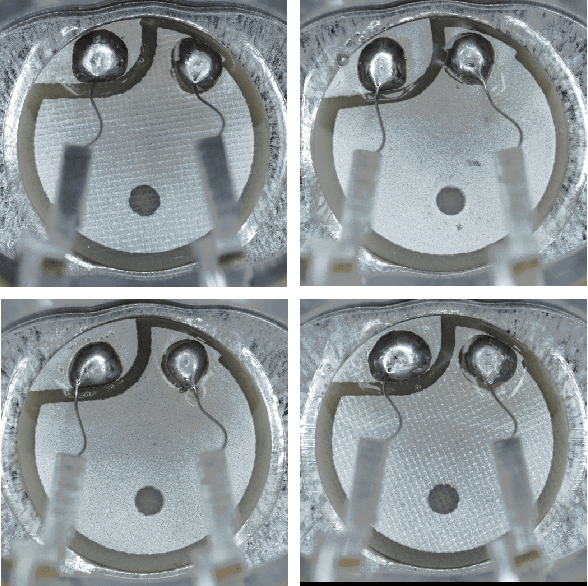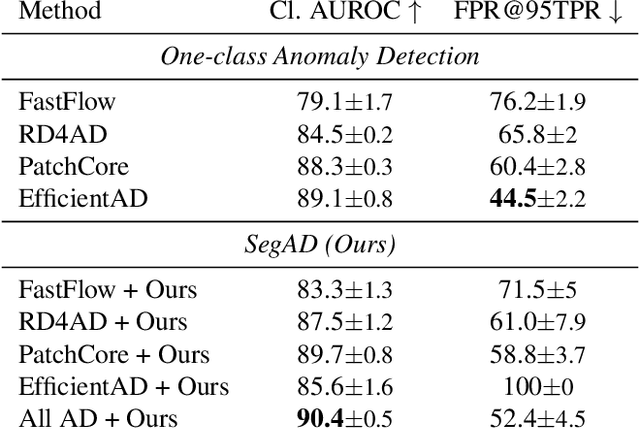Aimira Baitieva
Beyond Academic Benchmarks: Critical Analysis and Best Practices for Visual Industrial Anomaly Detection
Mar 30, 2025Abstract:Anomaly detection (AD) is essential for automating visual inspection in manufacturing. This field of computer vision is rapidly evolving, with increasing attention towards real-world applications. Meanwhile, popular datasets are typically produced in controlled lab environments with artificially created defects, unable to capture the diversity of real production conditions. New methods often fail in production settings, showing significant performance degradation or requiring impractical computational resources. This disconnect between academic results and industrial viability threatens to misdirect visual anomaly detection research. This paper makes three key contributions: (1) we demonstrate the importance of real-world datasets and establish benchmarks using actual production data, (2) we provide a fair comparison of existing SOTA methods across diverse tasks by utilizing metrics that are valuable for practical applications, and (3) we present a comprehensive analysis of recent advancements in this field by discussing important challenges and new perspectives for bridging the academia-industry gap. The code is publicly available at https://github.com/abc-125/viad-benchmark
Supervised Anomaly Detection for Complex Industrial Images
May 08, 2024



Abstract:Automating visual inspection in industrial production lines is essential for increasing product quality across various industries. Anomaly detection (AD) methods serve as robust tools for this purpose. However, existing public datasets primarily consist of images without anomalies, limiting the practical application of AD methods in production settings. To address this challenge, we present (1) the Valeo Anomaly Dataset (VAD), a novel real-world industrial dataset comprising 5000 images, including 2000 instances of challenging real defects across more than 20 subclasses. Acknowledging that traditional AD methods struggle with this dataset, we introduce (2) Segmentation-based Anomaly Detector (SegAD). First, SegAD leverages anomaly maps as well as segmentation maps to compute local statistics. Next, SegAD uses these statistics and an optional supervised classifier score as input features for a Boosted Random Forest (BRF) classifier, yielding the final anomaly score. Our SegAD achieves state-of-the-art performance on both VAD (+2.1% AUROC) and the VisA dataset (+0.4% AUROC). The code and the models are publicly available.
 Add to Chrome
Add to Chrome Add to Firefox
Add to Firefox Add to Edge
Add to Edge